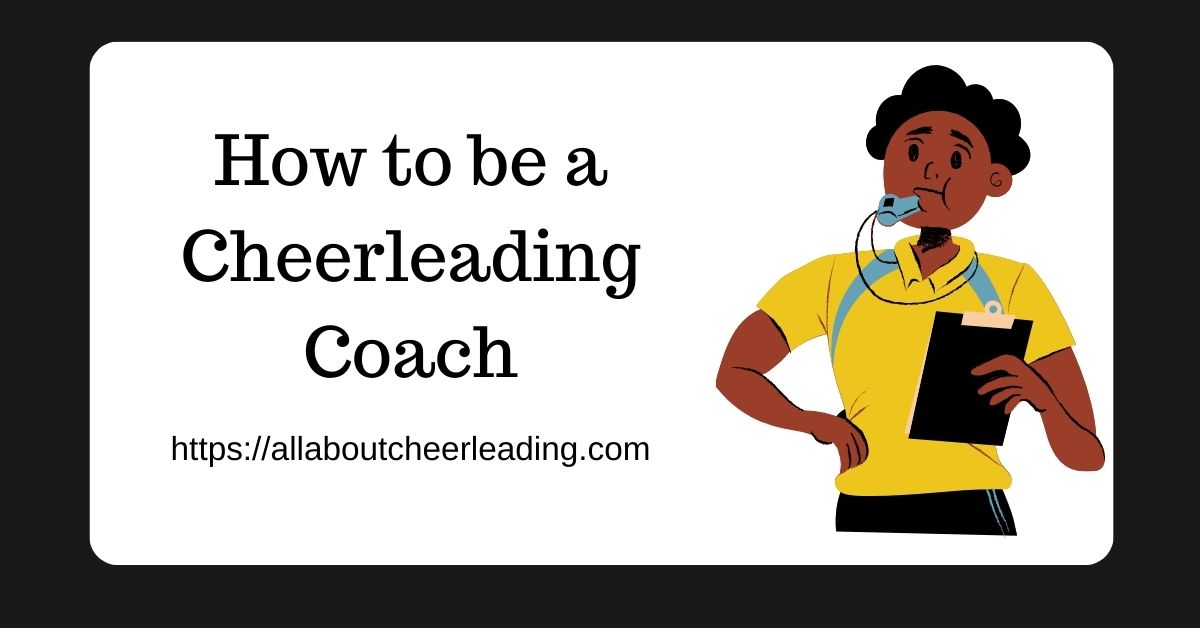Cheerleading is more than just a sport; it’s an embodiment of spirit, enthusiasm, and teamwork. Becoming a cheerleading coach, therefore, is not only about knowing the moves but also about understanding the heart and soul of the sport.
In this article, we will walk you through the steps, skills, and considerations necessary to embark on this rewarding journey.
Required Qualifications and Certifications
Most schools and institutions prefer coaches who are certified. Here’s why and how you should consider getting certified:
Safety First!
The U.S. Consumer Product Safety Commission highlights cheerleading’s injury risks. These sports-related mishaps can be severe, but with a certified coach’s expertise, many can be avoided. Such coaches possess specialized training to ensure safety, emphasizing correct techniques and preventive measures.
Courses and Certifications
Many organizations offer coaching courses. Some of the most recognized ones include:
- American Association of Cheerleading Coaches & Administrators (AACCA): A leading authority in cheer coaching, AACCA offers specialized courses that focus on safety and best coaching practices. Their certifications are widely respected in the industry.
- National Council for Spirit Safety and Education (NCSSE): An organization dedicated to ensuring safe cheerleading practices, NCSSE provides comprehensive training for aspiring coaches, emphasizing both techniques and safety protocols.
Developing Essential Coaching Skills
Communication is Key
Clear communication forms the backbone of effective coaching. A coach must articulate instructions distinctly, ensuring athletes grasp both the technique and intent. Beyond spoken words, gestures, facial expressions, and body language play pivotal roles in transmitting understanding.
Patience and Persistence
Every athlete’s learning curve varies. Some might grasp a move instantly, while others may need multiple attempts. Here, a coach’s enduring patience is crucial. It fosters an environment where learners feel supported, driving them to persevere rather than surrender to initial setbacks.
Planning and Organizing Team Activities
Tryouts and Team Selection
Tryouts are the gateway to forming a cohesive cheerleading squad. Transparent selection criteria, based on skills and attitude, guarantee fairness. By ensuring unbiased assessments, coaches uphold integrity, offering every hopeful an equal shot at making the team.
Routine Design and Choreography
Choreographing a routine isn’t merely about stringing moves together. It demands a vision, factoring in the squad’s abilities and resonating with spectators. A well-crafted routine, tailored to team capabilities, can captivate audiences, leaving a lasting impact.
Staying Updated
Cheerleading, like all sports, evolves. To be an effective coach, staying updated with the latest trends and techniques is crucial.
Workshops and Seminars
Workshops provide hands-on learning experiences, teaching new moves and essential safety protocols. Seminars offer theoretical knowledge, often featuring industry experts. Both are instrumental for a coach’s growth and maintaining contemporary teaching techniques. Participate to stay ahead and competent.
Online Resources
The internet brims with platforms offering cheerleading insights. From forums where coaches discuss challenges to official websites that offer tutorials and safety guidelines, leveraging these resources can rejuvenate one’s coaching style and address team-specific concerns.
Building Team Spirit and Addressing Conflicts
Team-Building Activities
Beyond practice, team outings and group challenges foster camaraderie. Whether it’s a picnic or collaborative games, these interactions solidify trust and understanding, essential for synchronized performances on the field.
Conflict Resolution
Disagreements are natural in teams. An adept coach steps in promptly, listens to both sides, and finds middle ground. Utilizing mediation techniques ensures that differences don’t overshadow the collective team spirit.
Understanding and Ensuring Safety
Regular Equipment Checks
Ensuring the safety of cheerleaders starts with equipment in prime condition. Mats should be free of wear and shoes must provide optimal grip. A routine check prevents unforeseen accidents.
Emergency Protocols
In the unpredictable realm of athletics, readiness is paramount. A stocked first aid kit and fundamental first aid knowledge, as endorsed by organizations like the Red Cross, can make a critical difference during emergencies.
Continuous Self-Improvement
A coach constantly encounters new techniques and challenges. Adaptability and open-mindedness are key to evolving successfully.
Seek feedback
Actively soliciting input from team members can reveal areas for improvement, ensuring the squad reaches its potential and feels valued.
Don’t hesitate to refine your methods
The best coaches aren’t static. By continuously updating teaching techniques based on credible sources and firsthand experiences, they foster growth and excellence.
Conclusion
Becoming a successful cheerleading coach is a blend of passion, knowledge, and skills. This role demands dedication, but the rewards – watching your team succeed and knowing you played a part in it – are unparalleled. Embrace the journey and lead with your heart. Your team will follow, not just in step, but in spirit too.

